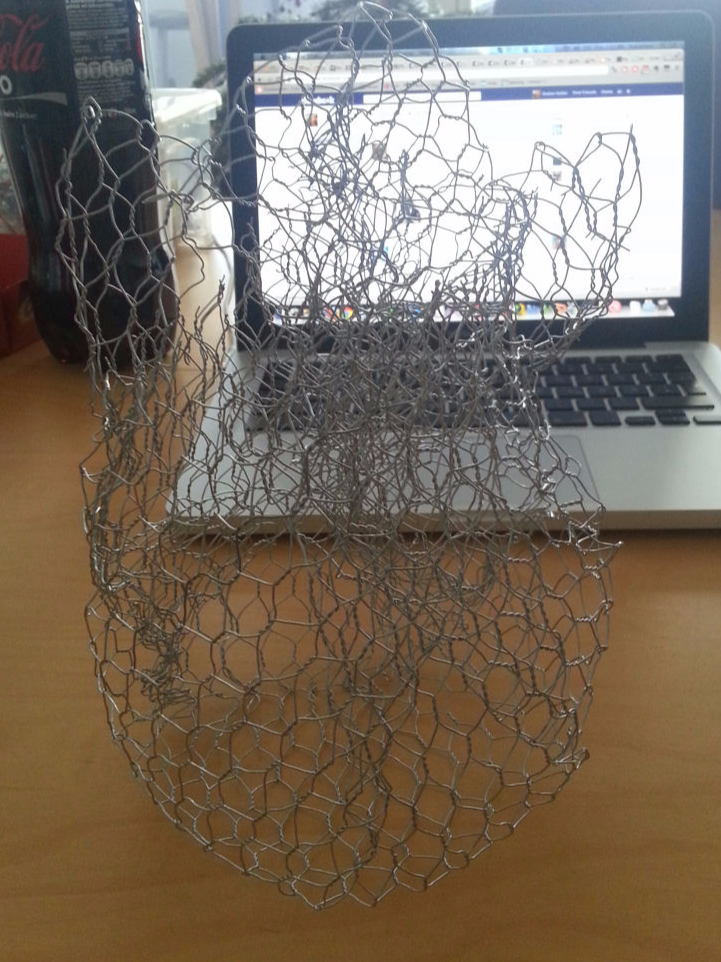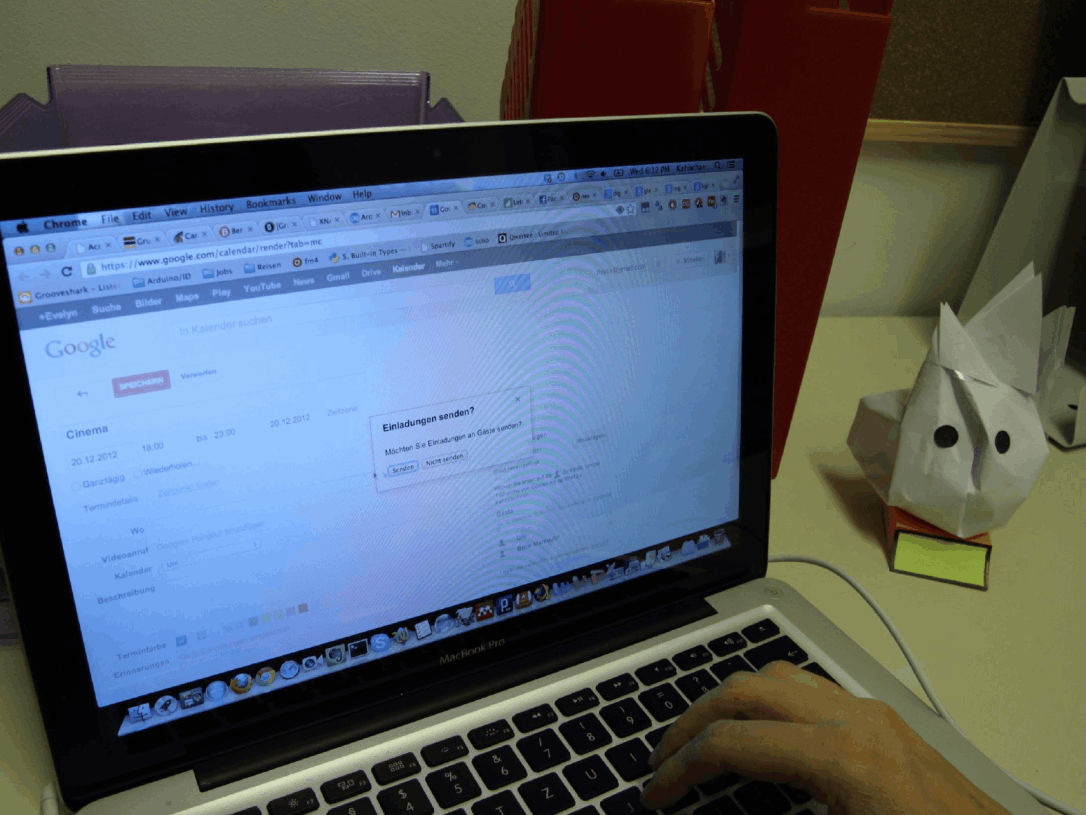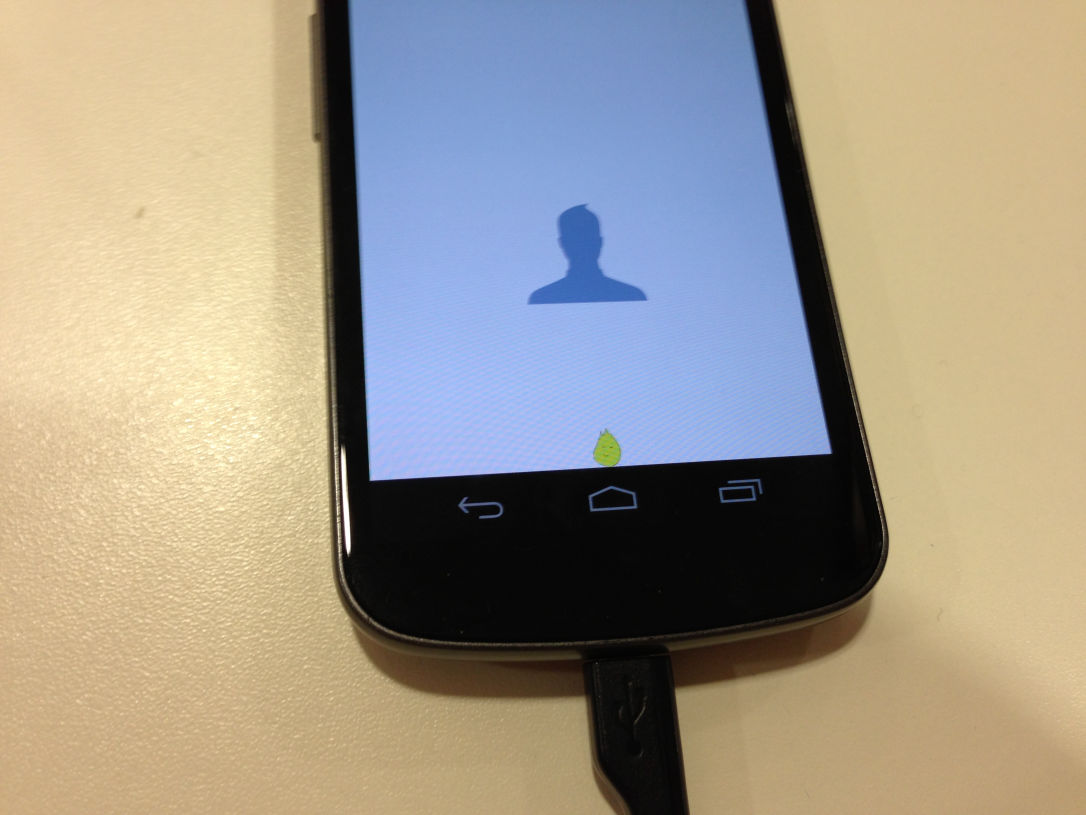
Wireframe model

Materials and led installation
My role: UX designer, UX researcher, app developer
- Contextual interviews
- Personas
- Lo-fi, Hi-fi prototyping
- KinectCam for 2 sides camera (front, back)
- Tangible object made of wire, paste, parchment
- Arduino Mega Board with Tinkerkit and BlinkM
- Android smartphone app
Socialising and meeting friends is a very important activity during people’s life. Family and friends are the most important peer groups when it is about advice or helping each other to solve problems.
To maintain these groups is a very important matter; nevertheless, it is in some situations hard to do. Managing time for get-togethers with friends is not very easy if we consider work-, student- or private-duties of a person. Like described in the conference paper "Student Socialization in the Age of Facebook", people tend to forget dates or events and are catching negative attention from their friends and family.

Wireframe model

Materials and led installation
Preparation phase: user interviews
In the preparation phase, we were interviewing 5 persons concerning their outgoing habits. Their age was between 24 - 35 years. 3 male and 2 female. 3 IT people and 3 non IT people.
Each of the participants had to take 4 photos via their smartphone, representing their social life and how they are arranging get togethers with friends, so that we can gain initial insights about their social habits.
The outcomes were summarised on one page per participant (content is blurred out due to privacy reasons):

Findings: From the replies of our test persons we have found out, that most of the people that we have interviewed lead a rather active social life, but some that don't engage so much in social activities, tend to stay at home and get lonely. We wanted to support those people by motivating them to meet and socialise with other people and therefore improve their overall wellbeing.
Based on the user interviews and desktop research concerning tangible interfaces and social connections, personas were created.
Paper sketches, lo-fi prototypes and storyboards
We have created different user scenarios with lo-fi prototypes and tested them with users.
At the beginning the idea was to focus on the current friendship connections and to manage the process of getting together. So a user would create a new event and send an invitation either to one or multiple friends, inviting them to the event.
Upon paper prototyping we came up with the idea to form the device in the shape of a flame that symbolises the burning passion of a relationship with a person.



User study: evaluation session
In our qualitative user study four test persons participated.
- Two male and two female persons of age 31, 25, 24 and 26 years.
- Two test persons were study colleagues of us
- One person was a friend who also workes in IT
- The last tester was recruited by asking several students in the university canteen if they would like to participate in testing our prototype.
The four test users where encouraged to explore and try out all aspects of the flame without any instructions. Furthermore, the users where equipped with an additional smartphone in order to take pictures of interactions with the object, whenever there is something that attracts attention for whatever reason. The pictures were discussed afterwards. In this way, the flow of „exploring the new product“ is not broken.
During the evaluation session, shared roles were switched after each other:
- Contact person for user
- Observer who takes notes
- Person who films the scenario


Findings and conclusion
Tangible device
Flame as accessory was accepted very well, but the device is too big to be placed on a desk where the user needs to connect via cable. A solution would be either to make the flame smaller or additionally to include a wireless connection to the flame, so that the user can place the accessory wherever wanted.
Friendly flame integrations should also be extended to other social networks, that are used by the users (e.g. google+, ...)
From culture to culture the colors are differently interpreted, as well as, people prefer to set up their own colors for the flame. Personalisation of colors should be allowed.
Mobile app
As users had trouble to connect the app with the Friendly Flame device, a splash screen should explain how to connect the device.
The overview of personal outgoingness should also be shown in the mobile app, so that the user can access the personal outgoingness without the Friendly Flame accessory.
Key learning for future
There is much more needed to tell the outgoingness of a person as analysing a persons facebook event activities. Therefore a much better usage of Friendly Flame would be for small, everyday activities like cleaning up a room, studying for an exam, where a connection between person and device could visualize a progress in achieving a task.